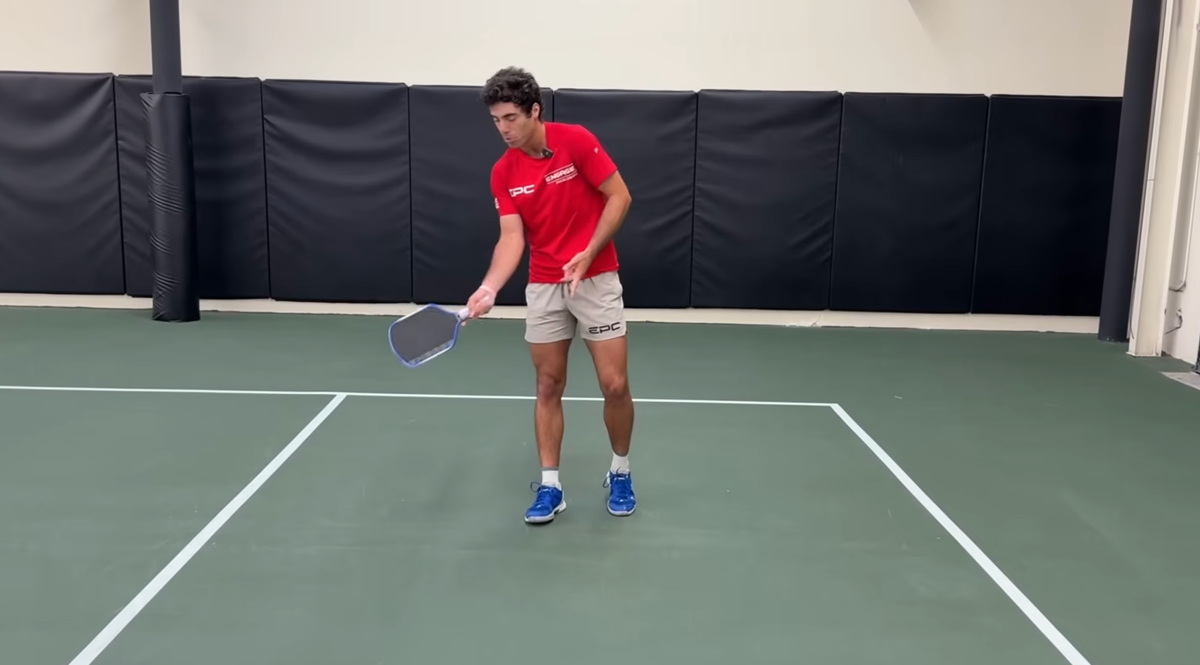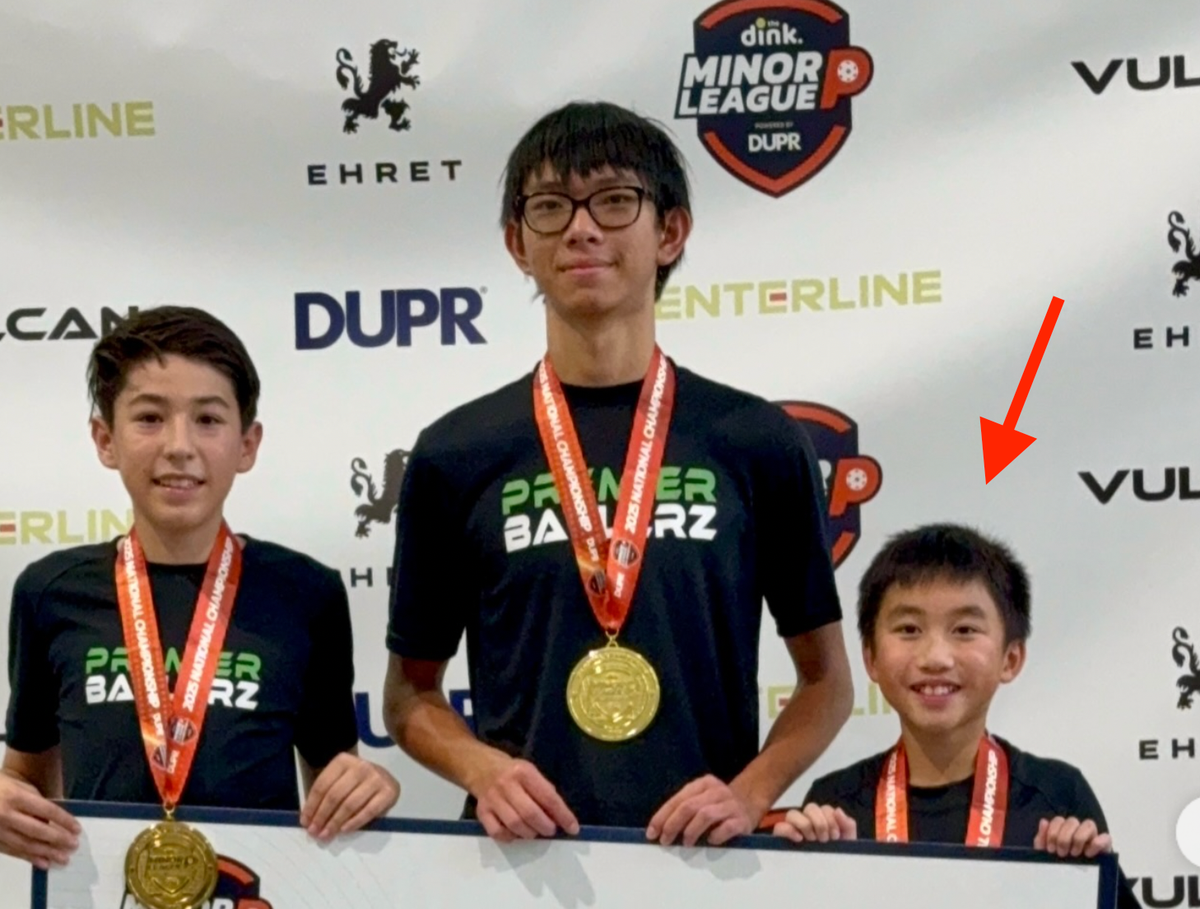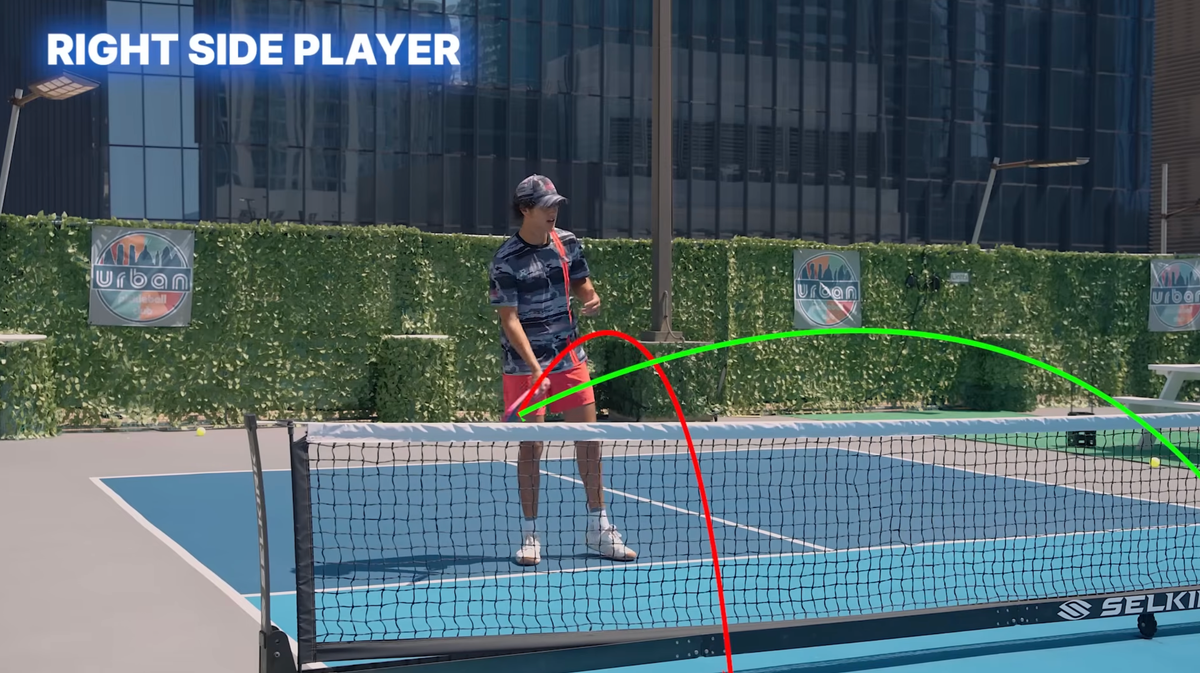Let’s break down something that might seem simple but is actually quite nuanced: your body position on the pickleball court. Often, we hear about the importance of an “athletic stance.” However, what many interpret as an athletic stance turns into something resembling a squat, and I can’t help but feel like I’m about to be tackled when I see this.
Here’s the thing, though. This squatting stance is not agile at all. When you squat, your weight naturally shifts to your heels, and your body gets compressed. To compensate for this, players do strange things to create forward motion. Imagine a basketball player on defense, getting low. But think about when that same player has the ball – they’re not down low; they’re upright, hands up, and ready to move into their shot. This is what we should aim for.
Besides, this squatting position can put a lot of physical strain on your body as you move and jump around the court, leading to joint compression. So, what’s the optimal stance? Picture this: your basic ready position. You’re looking over your paddle at the ball. Your paddle is up and engaged in the point. Your hands are on the paddle, keeping your shoulders even and your elbows extended. While the T-Rex arms position might feel comfortable, it leads to hitting the ball behind you, which isn’t ideal.
Now, let’s talk weight distribution. Instead of an even 50-50 split, think 60-40 or even 70-30. For example, if the ball is on your left, press into your left side, keeping your knees loose. You don’t need to be as low as possible. This weight shift helps you extend and rotate your shoulders, making it easier to cut off the ball. When you’re too low, you tend to react low, making it hard to cut off shots, and you end up doing awkward butt shot movements.
We want to be loose and ready to move, so when your weight is on one leg, you’re prepared to push off and turn in any direction. However, the problem with being overly compressed in the athletic stance is it leads to a crab walk situation. In the crab walk, your toes don’t turn, which means your hips and shoulders don’t either.
The key here is the kinetic chain. When you transfer your weight and lift up, you’re protecting your bullseye – your target – and it’s crucial that this bullseye is forward. If it’s down, your paddle drops, and your hips bend over. Once your hips are bent, you disconnect your lower body from your upper body.
So, aim to have your hips under you with good posture. You can get low as long as your posture remains high, ready to accelerate, push off, and move. Forget the 50-50 weight distribution; think light and loose, with your weight on the balls of your feet, just like how you naturally shift your weight while standing in line at Starbucks – comfortable, yet ready to go. Apply this concept on the court, and you’ll find it’s easier on your body and enhances your readiness to accelerate and move.
Anuncie Aqui / Advertise Here
Sua marca para o mundo Pickleball! / Your brand for the Pickleball world!

 English
English  Spanish
Spanish  Portuguese
Portuguese  German
German  Italian
Italian  Japanese
Japanese  French
French  Polish
Polish  Russian
Russian  Netherlands
Netherlands  Hungarian
Hungarian  Turkish
Turkish  Videos
Videos 






 English (US) ·
English (US) ·  Portuguese (BR) ·
Portuguese (BR) ·